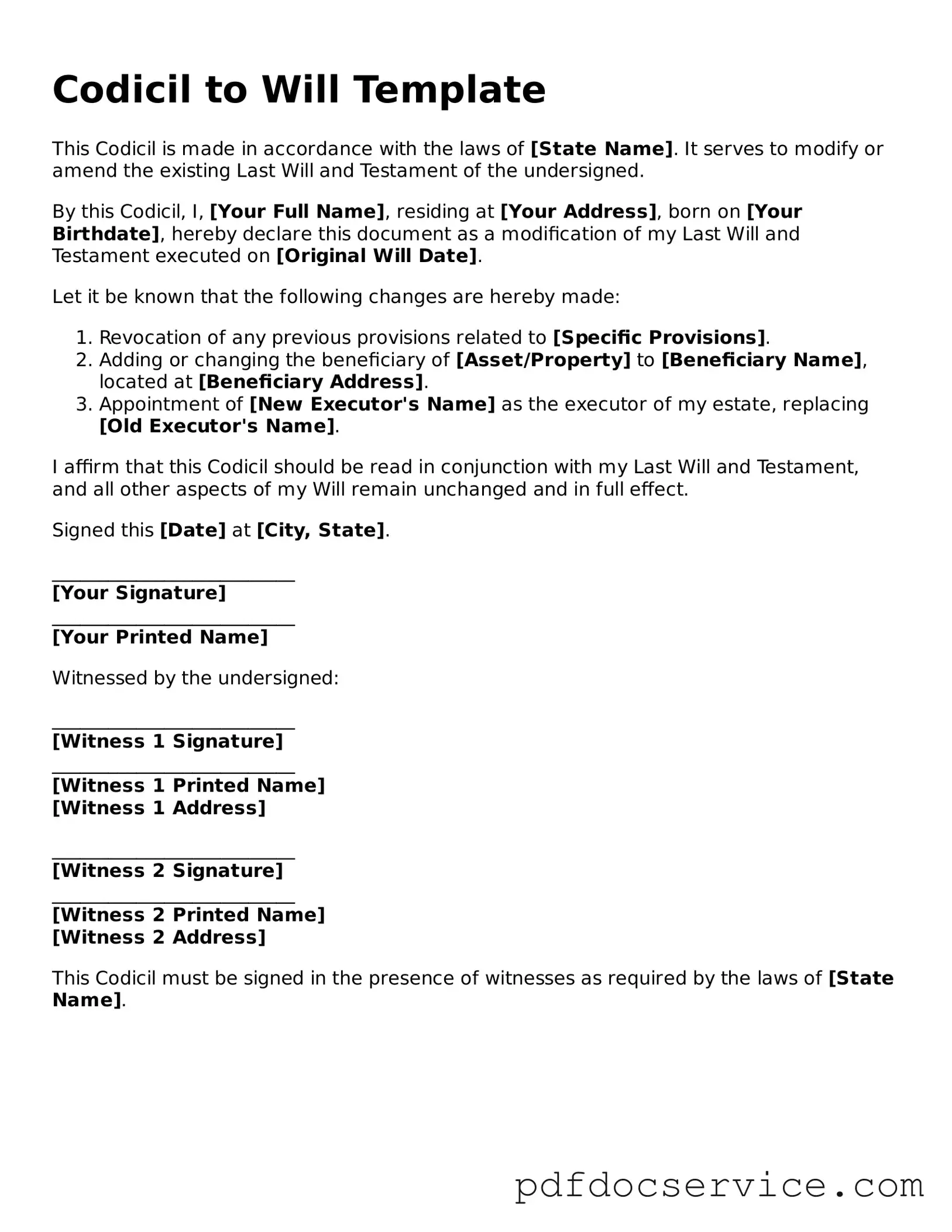When it comes to estate planning, ensuring that your wishes are accurately reflected in your will is paramount. A Codicil to Will form serves as a valuable tool for individuals seeking to make modifications or updates to their existing will without having to draft an entirely new document. This form allows for the addition of new provisions, the alteration of existing terms, or even the removal of certain clauses, all while preserving the original intent of the will. Importantly, the codicil must be executed with the same legal formalities as the original will, which typically includes being signed in the presence of witnesses. This ensures that the changes are legally binding and recognized by probate courts. Additionally, clarity is essential; the language used in a codicil should be precise to avoid any ambiguity that could lead to disputes among heirs. By utilizing a codicil, individuals can adapt their estate plans to reflect changes in circumstances, such as marriage, divorce, or the birth of a child, thereby ensuring that their estate is managed according to their current wishes.
